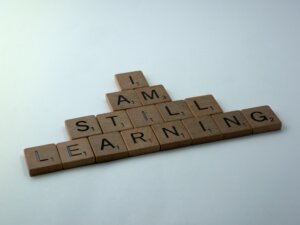In training, using what tools and methods work in any given environment has to be what we are about. While the e-learning design process is certainly not my specialty, it is the specialty of Tobias Jedlund, winner of the Best eLearning Designer award, who is my guest blogger today. You can reach Tobias at [email protected].
What follows is an interview between Tobias and the award’s organizers, Maestro eLearning.
Q. What kind of eLearning work do you do?
My day typically consists of course development. The duties that go along with that include writing, organizing, and arranging content. Once the content is organized, I develop supporting interactions, graphics, animation, audio, and video elements.
Other parts of my day may include maintenance, review, and supporting co-workers in course development and other multimedia needs. Currently, I am spending the majority of my time incorporating audio into our courses.
Q. What are some of your trustiest resources?
- Photos.com
- FlashKit.com
- Lynda.com
- theElearningCoach.com
- Lectora’s user community
- Websites: just about anything that I come across that inspires me (colors, interaction, layouts, navigation, designs)
- Design books for web, graphic, media, and art
- Personal sketches/drawings
Q. How about tools? What are some of your most useful e-learning design process?
- Lectora
- Adobe Photoshop, Flash, Captivate, Media Encoder, Premiere, and Acrobat
- Microsoft Office
- Audacity
- Snag-it
- iMovie
- Quicktime
Q. For course development, how do you organize your content? What’s your process?
After receiving the content I go through the following steps:
- Determine the target audience and purpose of the course.
- Read through the content to gain an understanding of the material.
- Create learning objectives.
- Break up content into manageable sections and chapters. I typically create an outline.
- Using the outline as a guide, I begin laying out the text in our development tool. Essentially I am creating a storyboard.
- As I am laying the content out, I make notes regarding images, interaction, page design, and media elements.
- Review the content and make adjustments to text as needed.
- Create and develop all the graphics, images, interactivity, and multimedia content.
- Create checkpoint questions.
- Review the course and make any final edits/updates.

One thing that I am passionate about is visuals. My background is in media production and that is what got me into Instructional Design. I am currently working on a visual arts degree and one of my goals is to successfully integrate visual art theories and design into the eLearning environment.
Online courses have to compete for attention in a world of 3D movies, phone apps, and social media. As online media continues to evolve, learners demand an ever-increasing level of style and engagement in every interaction. They are expecting a “wow” factor, so the challenge for instructional designers becomes how to create courses with high engagement and visual impact that still deliver the highest quality content to meet course objectives. There needs to be a balance so that visuals enhance the transfer of knowledge instead of hindering it.
I truly believe that there needs to be a shift in the way eLearning is presented. I look forward to the future of eLearning and the challenges that this industry will have.
—
For more resources about training, see the Training library.
About the Interviewer
Maestro eLearning is a customer service company in the business of creating custom online training courses. They’re collaborating with industry professionals to deliver more value in their series “Trainer Talks.” If you would like to participate in an interview or suggest an interview candidate, perhaps a top-performing employee or a brilliant colleague, contact [email protected].
For more information on a multitude of different approaches and viewpoints on training and development as well as other practical topics about businesses, nonprofits and government organizations, look to this blog and The Free Management Library. For more information on the Blog Host, (Jack Shaw), and other articles I have written on related subjects, please check out my website. By all means, if you are a guest blogger in your own right and have something to say, please let me know at [email protected].
Feel free to disagree with my point of view and provide your own if you are so inclined. There’s plenty of room for different opinions and gives us balance. Also, if you have a topic you’d like to hear more about, let me know. A discussion you’d like to get several points of view? I like to keep it lively and interesting.
For a look at the human side of training from my Cave Man perspective, please check out my book, The Cave Man Guide to Training and Development. Happy training.
 Sections of this topic
Sections of this topic
















